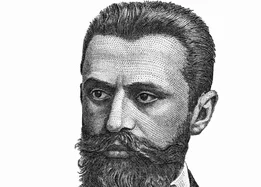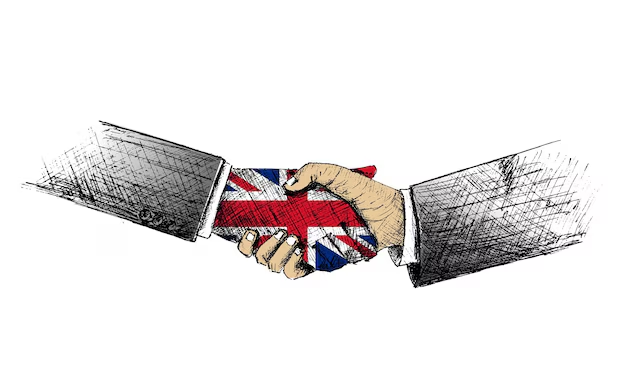Introduction
The conflict between Israel and Palestine is a historical narrative that explains ownership of the land, leadership, and people’s identity. And it has a history that goes back to the late nineteenth century when the state of Israel did not exist yet. We will discuss these major events, the decisions leading up to them, the often unreported negotiations, and how international institutions have influenced the conflict.

The Zionist Movement- (Late 19th Century) in Israel-Palestine Conflict
What Was Zionism?
Zionism was a nationalist movement that began in the late nineteenth century to create a Jewish national home in Palestine. It was triggered by the increasing cases of anti-Semitism in Europe where Jews have for long been discriminated against. The core concept was to give Jews refuge and protection, that would allow them to live their life without persecution. Thus, Zionism was not only a religious concept but also a political one.

Why Did Zionism Emerge?
European Jewish communities were increasingly experiencing antisemitism, especially in the later part of the 19th century in Eastern Europe and Russia. Although pogroms that were violent riots against Jews and systematic discrimination gave Jews limited rights and no opportunities in the economic aspect of life. Several ‘enlightened’ Jews then started pressing for a solution and the Zionist movement came into being.
Key Founder
There are quite several well-known Zionist leaders, however, the most recognized Zionist leader is Theodor Herzl who was an Austrian journalist. His pamphlet published in 1896 known as Der Judenstaat-Evaluation of a Jewish State called for the creation of such a state to deal with problems facing the Jews.

Motivation
Herzl and others like him believed that Jews would always remain outcasts in Europe. They were convinced that Jews would never gain the acceptance they sought in those societies. Hence they required a territory of their own where they could exercise full autonomy.
First Zionist Congress in the year 1897
In 1897, Herzl convened the First Zionist Congress at Basel in Switzerland. This meeting could be considered the official founding of what would become the Zionist movement. This intended to gain political allies in the struggle to establish a Jewish state and convince world superpowers to back up their cause.

Goal
To establish a Jewish nation legally, which is already in the process of being established in Palestine.
Challenges
Palestine was under the Ottomans when this occurred and the native Arab peoples, who formed the vast majority of the population were against immigration of large numbers of Jews.
British Consents and Israel-Palestine Conflict

Background of British Interest
Britain’s strategy for dominance in the Middle East during the First World War was seeking partners for alliance most specifically as the Ottoman empire was about to fall. The British committed to both Arab leaders in the Middle East and the Jews at the same time, making contradictory promises. They believed they could fulfill both commitments, but in reality, they were deceiving both sides to gain their loyalty. Ultimately, they had no intention of honoring any of their promises.
Sykes-Picot Agreement (1916)
An unspoken pact existed between Britain and France to carve up the Ottoman Empire and the regions of Palestine in particular.
Husayn-McMahon Correspondence (1915–1916)
Britain offered the Arab leader, Sherif Husayn bin Ali, Arab independence in return for an uprising against the Ottoman Empire. This included Palestine and much later Britain denied doing so.
The Balfour Declaration (1917)
Within these cross-improvising factors, the British government makes the Balfour Declaration. Arthur Balfour, the British foreign secretary, wrote a letter to Lord Rothschild on October 2, 1917. Lord Rothschild was a leader of the British Jewish community. In the letter, the British government declared its support and intent to create a ‘national home for the Jewish people’ in Palestine.

Motivation
The support for the Zionist movement was important to Great Britain to ensure that they had a grip on the Middle East region after the Second World War. Also, most of the British superior officers seemed to be supportive of Zionism.
Impact
The declaration has been worded rather vaguely and it contains contradictions. It pledged support for a Jewish National Home while also promising not to harm the civil and religious rights of non-Jewish communities already in Palestine. This dual assurance laid the foundation for the conflict.
Rising tension between Jews and Arabs (1920-1948)
In 1922, the British established the Mandate for Palestine, creating mechanisms that enabled Jewish immigration to the Arab-populated country.

The League of Nations formed after the First World War, granted Britain the responsibility of ruling over Palestine. Jewish immigration following the Balfour Declaration sparked unrest, as Arabs saw themselves being displaced from their ancestral land.
Jewish Immigration
Many Jewish refugees from Europe moved to Palestine from the 1920s to 1948 mainly because of the Nazi regime in Germany.
Arab Resistance
To the Palestinian Arabs, Jewish immigration was a calamity that threatened their economic and political existence and position. Some Arab riots started in the 1930s against both the British and the Jewish people demanding a stop of Jewish immigration into the country and formation of an independent Arab state.
Key Events and Revolts
1929 Hebron Massacre

One of the bloodiest altercations which took many Jewish lives in the city referred to as Hebron signifying growing hostility between the two groups.
1936–1939 Arab Revolt
Palestinian Arabic rebellion against Britain and Zionists – a widespread anti-British and anti-immigration movement. The revolt was eventually put down by the British and although the revolt made the split between the two people far worse.
Partition and the Birth of Israel (1947-1948)
UN Partition Plan (1947)
Further worsening of the Jewish and Arab’ conflict, the British decided that they could not handle the situation anymore and referred the issue to the newly formed United Nations. The UN proposed partitioning Palestine into two separate states: it will become split into one Jewish and one Arab state with Jerusalem as an international city.

Plan
Palestine would give the Jewish state 55% of the land while Jews constituted about one-third of the population at the given time. The Arab state would take home 45%.
Arab Rejection
The Palestinian Arabs and other neighboring Arab countries rejected the plan stating that it was unjust and infringing on the sovereign right of Palestinians to determine their future.
Jewish Acceptance
The Jewish community with leaders like David Ben-Gurion agreed to take the plan as the only chance that was possible in establishing a Jewish state.
The 1948 Arab-Israeli War
The state of Israel was established on the 14th of May in the year 1948. The next day five Arabic countries led by Egypt, Jordan, Syria, Iraq, and Lebanon attacked the newly emerged state of Israel thus marking the start of the first Arab- Israeli war.
Stay connected for the next update about the Israel-Palestine Conflict.
For more current world affairs updates




